Hello & Happy Friday, my Friend. Welcome to the FoLD.
This week I had the pleasure of hosting a masterclass inside Lea Turner’s community (The HOLT), which is in my opinion the gold standard for online community. What Lea’s built is incredible and more importantly, meaningful. She’s built a village of founders from all over the world who have forged a community full of fun and mutual benefit.
I want to be Lea when I grow up.
Baby steps.
Anyway, one reason I love presenting to groups is that it forces me to rethink what I’m talking about and how I’m presenting it.
My core coaching curriculum is a pretty standard 8-week learning experience, but when I only have an hour, I have to be a lot more focused. And with more focus, I yield higher quality.
In the olden days (pre-AI), I would have opened Google Slides or Power Point and started plotting out a presentation outline with bullets and an image and that whole rigamarole.
These days, I have tools like Gamma.app that can ingest something I’ve written and convert it into a beautiful first draft of a presentation.
So I just start writing.
Almost as I’m doing right now with this newsletter.
I just write the things I think are relevant to the audience I’m speaking to and don’t have to worry about formatting or how it’ll look in the deck because AI is going to do that for me.
My favorite products are the ones that solve a problem you didn’t realize you had until you discovered their solution and Gamma is one of those (and no, this is not sponsored!).
The ADHD hamsters in my head spend more time thinking about formatting than just creating content. Fixating on little details that don’t matter or get to the crux of anything.
But when I write… I get into a rhythm (is it just me or is impossible to spell that word correctly the first time? Just me?).
The end result is usually pretty good.
Below is the end result of my preparation. Fair warning, it’s basically stream of consciousness and I’m leaving it that way intentionally so that you can see how well AI can help us crystallize & organize our thoughts, even when they’re messy.
Once this was written, I popped it into Gamma.app and had it create a presentation out of it. Some slides are below, and I’ve included a video of what the process looks like at the end of the post.
The Linkedin Pivot
Linkedin has evolved dramatically in the 6 years since I started posting intentionally in 2020.
What started as a utility for storing your offline connections online and job searching is now a full blown social networking site.
But unlike most other social media, there are several key differentiators that make time spent on Linkedin an investment rather than a waste of your time.
They are:
The ability to build a highly targeted audience based on titles.
The ability to get organic distribution beyond your immediate 1st degree network.
The opportunity to start conversations with your ideal clients.
In this sense, Linkedin is so much more than a social media platform. It’s a serendipity manifestation engine. It’s like a CRM with all of the leads built into it already. One simply needs to know how to leverage it to promote their brand & convert connection into business opportunity.
Now these opportunities have always existed on Linkedin, but one of the primary differences between 6 years ago and now is how seriously Linkedin is taking this new evolution.
For much of the last decade, Linkedin As the oldest social networking platform in existence (pre-dating Facebook, Twitter, and the like), Linkedin has tried several times to encourage members to become “creators,” but with limited success.
Why?
Because Linkedin has firmly cemented itself as a job board in the minds of billions of people and most people are terrified to share a peep on the platform for fear that their employers will suspect them of seeking employment elsewhere.
But the world is evolving and there is now a very clear trend emerging:
Fractional & self-employment is rising steadily.
Which means that with every year that passes, Linkedin becomes less and less relevant to a larger and larger percentage of the human population, and that’s no good for business.
Frankly, Linkedin has a bit of a brand identity crisis on its hands and I don’t envy them because it is so many things to so many different customer segments:
Enterprise sales teams use Sales Navigator to sell into companies.
Recruiting teams use Recruiter to recruit talent.
Jobseekers use Linkedin to find jobs
Notably missing: small business owners.
And one needn’t look further than the premium landing page to see what Linkedin’s thinking there:
I don’t know when the premium page started to incorporate a value proposition for small business owners and leaders, but I suspect it might have something to do with the hiring of Jessica Jensen, Linkedin’s new Chief Marketing & Strategy Officer (and my pick for Linkedin CEO Ryan Roslanksy’s eventual successor).
SMB marketing ✅
Job board marketing ✅
Social media marketing ✅
And Jessica hired Heather Hopkins Freeland to be their Chief Brand Officer, with extensive experience in direct-to-consumer & B2B marketing
And Heather is hiring a VP of Brand whose entire job is to weave together all of those disparate value propositions to various customer bases into one cohesive brand.
So what does that mean?
To me it means that Linkedin is evolving into a branding platform.
For jobseekers
For employers
For businesses
After all, why should Google My Business get all the SMB marketing dollars?
215 million business listings worldwide in 2025
28,000 new global business registrations daily
~$171 billion in GMB-driven search & maps ads…
Perhaps that’s why Linkedin is starting to dedicate some real estate on its website to personal & professional branding, eh?
A sign of things to come…
Okay, so what?
Well, now that we know where Linkedin has been and where it’s heading, we can talk about how best for us, the small business owner, to take advantage of that.
In short, Linkedin has gone from a platform desperately seeking anyone to spend time creating content on the platform, to emphasizing the importance of “TRUST.”
And that, my friends, is a pretty drastic departure from the days when countless growth hacker gurus cluttered up our feeds with their disingenuous money making schemes & engagement pod shenanigans.
“I grew my following to 100k in 6 months while sleeping. You can too! Buy my course for $97 ($2,500 value)”
For years a cottage industry of instagram/facebook growth hackers colluded to boost engagement because for years they could.
Up until recently, Linkedin post distribution was fairly easy to game. It went a little something like this:
Publish your post at 8am
Engage like crazy during the “golden hour”
Get as many people to comment as possible (including bots from shady tools and irrelevant people from overseas who have no relevance to your actual business)
Repost your post to one of 20 company pages you’ve created
(NOTE: This was not how I played the game, but many did).
And many of these self-proclaimed gurus invited unsuspecting, naive people to join their “support groups” through which everyone colluded to boost each other’s engagement, all for the low low price of $100/month.
It was just one gigantic ponzi scheme.
And they were/are everywhere.
Somewhere between 2024 and 2025, Linkedin realized that they had a problem on their hands.
That their “professional network” was being overrun by shady snakeoil salespeople. In essence, the loudest voices on the platform were the least reputable and professional.
When you have a linkedin growth hacker getting more distribution & engagement than Bill Gates on a professional network owned by the company he founded, something is very very wrong.
And what we’re seeing now is the ultimate course correction.
Gone are the days when reach was pretty easy to get. When every post was getting tens of thousands of impressions on average or 1000s of votes on a poll (my fave!). These days even the most analytical nerds like me can’t seem to figure out a concrete correlation between post engagement & distribution (impressions).
The one thing I can say is that it’s definitely no longer the primary factor determining distribution. I have posts with double digit engagement that get 3x the distribution of posts with multiple hundreds of engagements.
And you know what? I’m happy about it.
Know why?
Because AI is in charge of post distribution now, and AI can’t be hacked by a bunch of growth gurus. That’s a refreshing level-set of the Linkedin playing field if you ask me.
Linkedin’s most recent algorithm shifts are the most drastic I’ve seen in 6 years of posting here daily.
Introducing: 360Brew, a cutting-edge, AI-powered recommendation & ranking model that fundamentally shifts how content is recommended on the platform.
Basically: 360Brew makes LinkedIn smarter and more fair. Instead of pushing you to “hack” the system, it rewards business owners who use their profile and posts to show real value. You spend less time guessing how to get noticed, and more time growing your business through meaningful connections and content.
So now that distribution is largely out of our hands, we no longer have to worry about it and can get back to the business of being strategic about building a targeted audience and strong relationships with human beings who might someday turn into clients and friends.
You know, like a networking site should be all about.
So here’s my strategy for optimizing growth on Linkedin:
The Four New Realities of LinkedIn
Profiles are Personal Brands
Content Drives Discovery
Comments Are Currency
DMs Are the New Sales Call
The Magnetic Brand Flywheel
(Introduce your core framework)
Positioning – Who you are & why it matters
Presence – How you show up visually & vocally
Participation – Where & how you engage
Process – Systems to keep it sustainable
The Mindset Shift - From Job Board to CRM
Stop treating LinkedIn like a platform
Start treating it like a pipeline
“Your future clients, collaborators, and competitors are all here.”
Linkedin is like a CRM with all the leads built into it. Using Sales Navigator, you can quite literally manage your pipeline in several of the same ways you would using a true CRM, albeit in a more clunky, straight-out-of-2005 kind of way.
This is what my week looks like:
5-10 posts / week
60% sales/marketing adjacent content
30% fascination content
10% window into my personal world
500+ comments / week
Responding to comments on my post, not because it boosts distribution but because I APPRECIATE PEOPLE who showed up to share their perspectives.
Commenting & networking strategically on posts written by larger accounts who speak to your ICP. Don’t comment & leave, peruse other comments and see if there’s anyone you’d like to interact with.
Extract yourself from the echo chamber you’re in by commenting on posts shared by your saved leads through Sales Navigator
Save leads
Go to home page
Filter by specific lead list
At least 100 new connections added / week via Sales Navigator
PRO TIP: You want to be adding people who are ACTIVE on Linkedin by leveraging the “Active on Linkedin” filter.
Only 25% of Linkedin’s membership uses the platform on a monthly basis. If you’re just adding people willy nilly, you might be adding ghosts to your network.
1000 targeted, active connections > 10,000 targeted inactive connections.
Upon connection acceptance, DO NOT PITCH. Be a human:
“Hey [name], thanks so much for accepting my connection request. First things first, I will never pitch you–not my style. Secondly, I would love to learn a fun fact or two about you. Here’s two about me: I have a hot sauce collection > 100 bottles and I’m a tri-citizen of Canada, U.S., and Italy.”
Look for signals & use them to foster connection
Connect with/direct message profile viewers in your ICP
DM people in your ICP who react or comment on your posts to thank them & say hi
Connect with/DM people in your ICP who reply to your comments on someone else’s post
So that’s my creative preparation process, and then I just head on over to Gamma.app and let it do what it does: turn these random streams of consciousness into a cohesive, well-organized, beautifully presented deck. Here’s a video of Gamma in action.
So go forth and conquer the new and improved Linkedin, y’all.
Focus less on trying to hack the algorithm and more on creating high quality content that speaks to your ideal client profile while proactively connecting and engaging with active people who fit that ICP.
Remember: social selling should feel more like socializing than selling.
Hi5 & Have a great weekend, y’all!
LD
🌶️



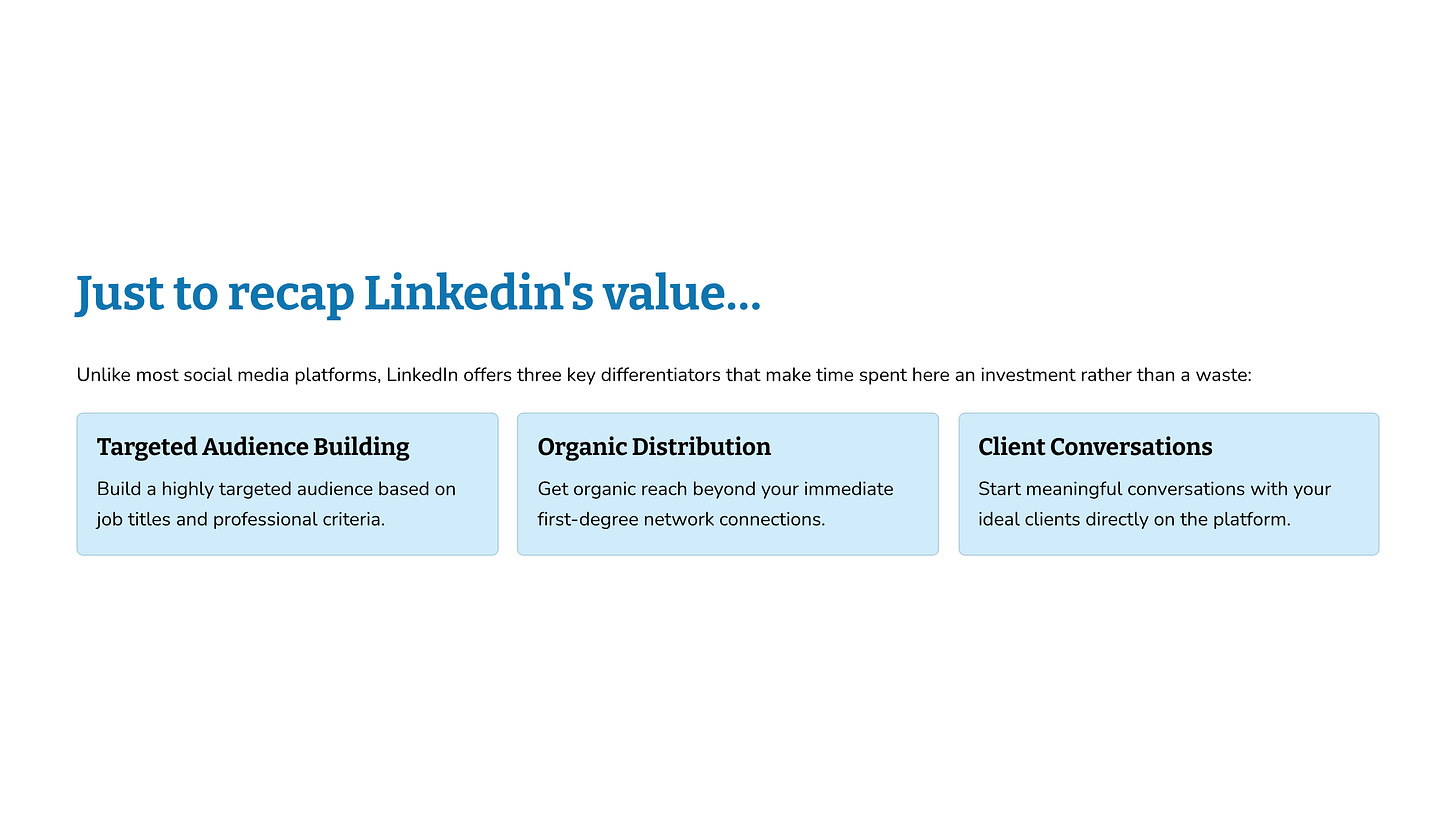
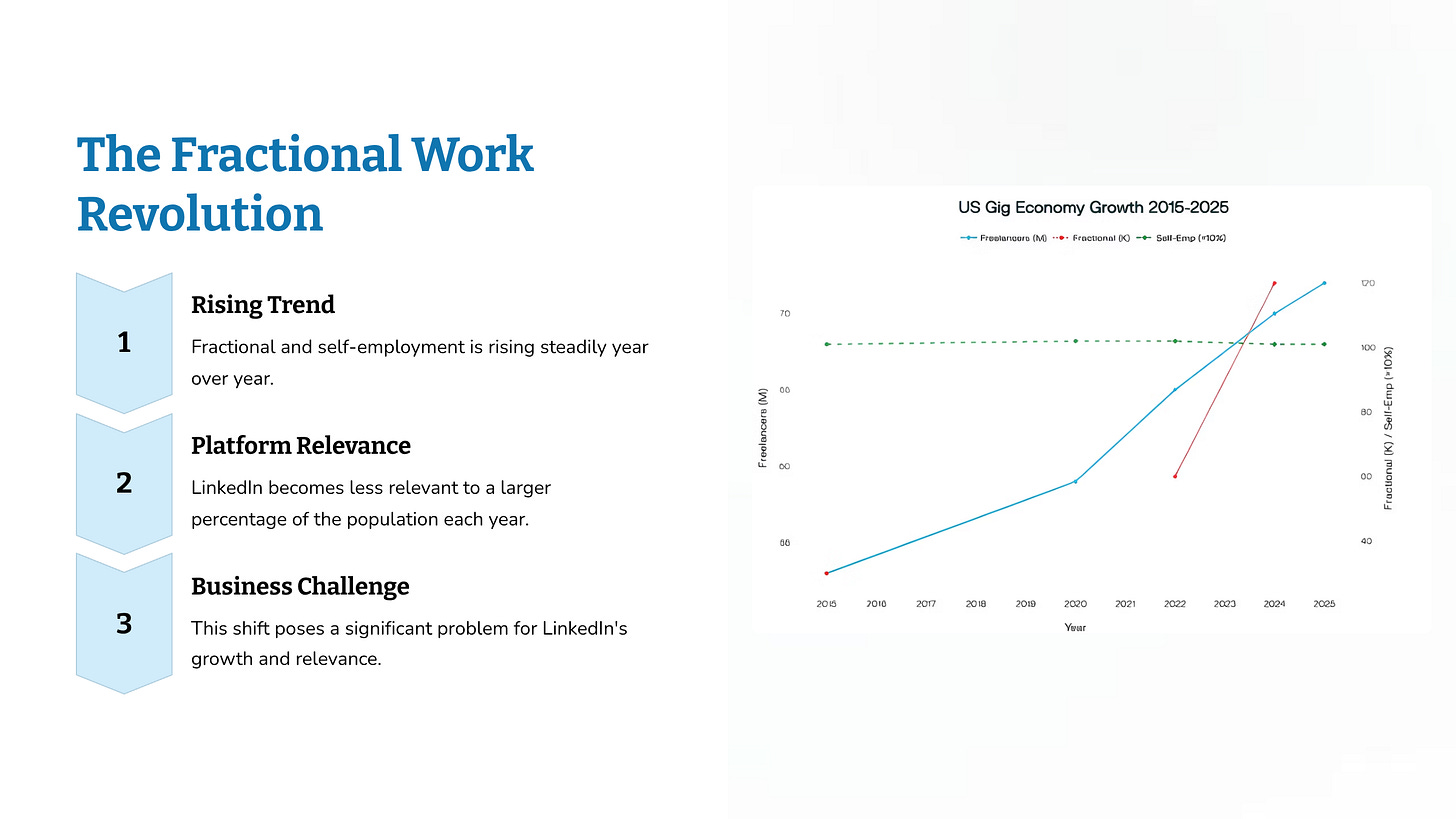
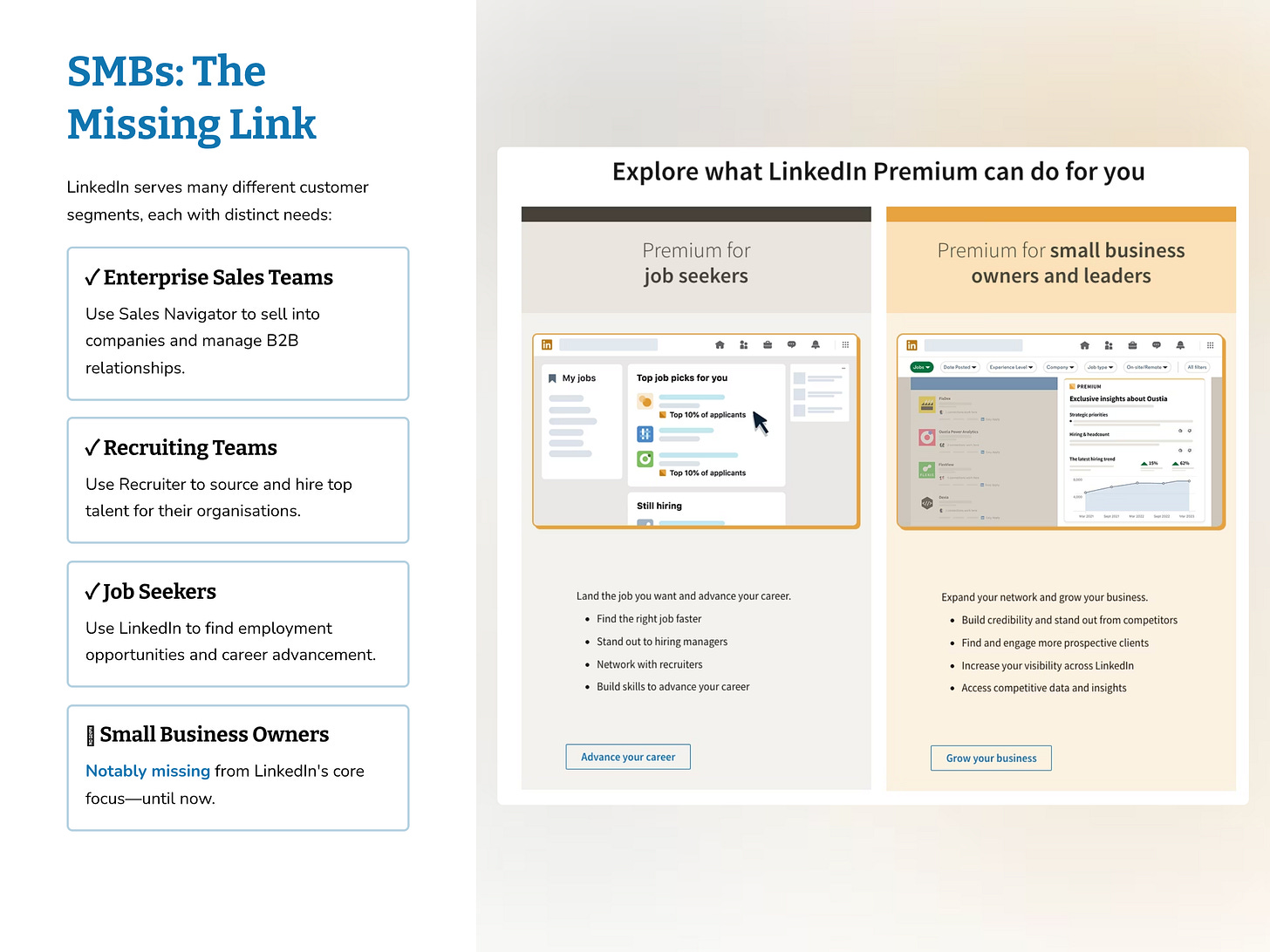
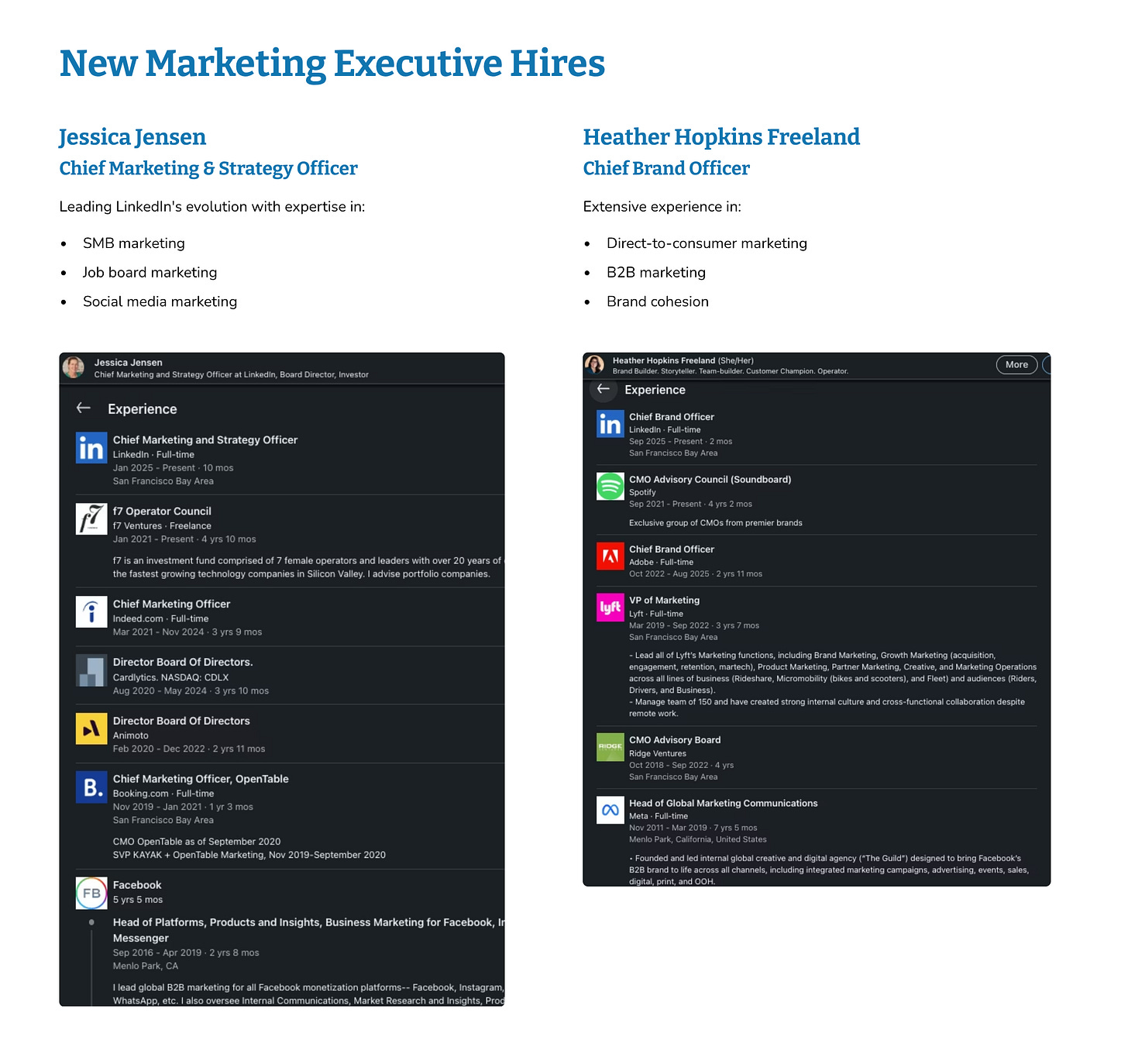
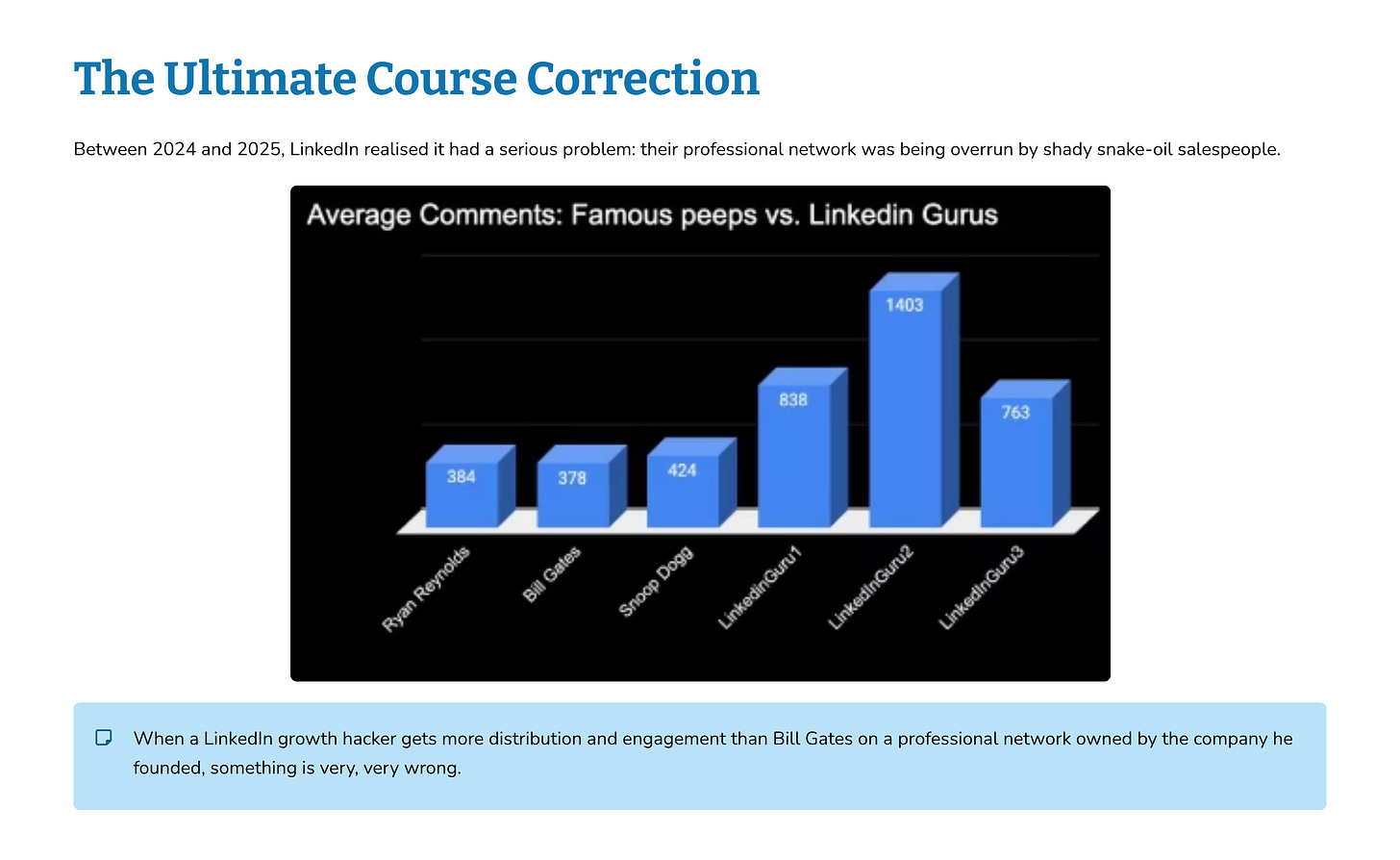
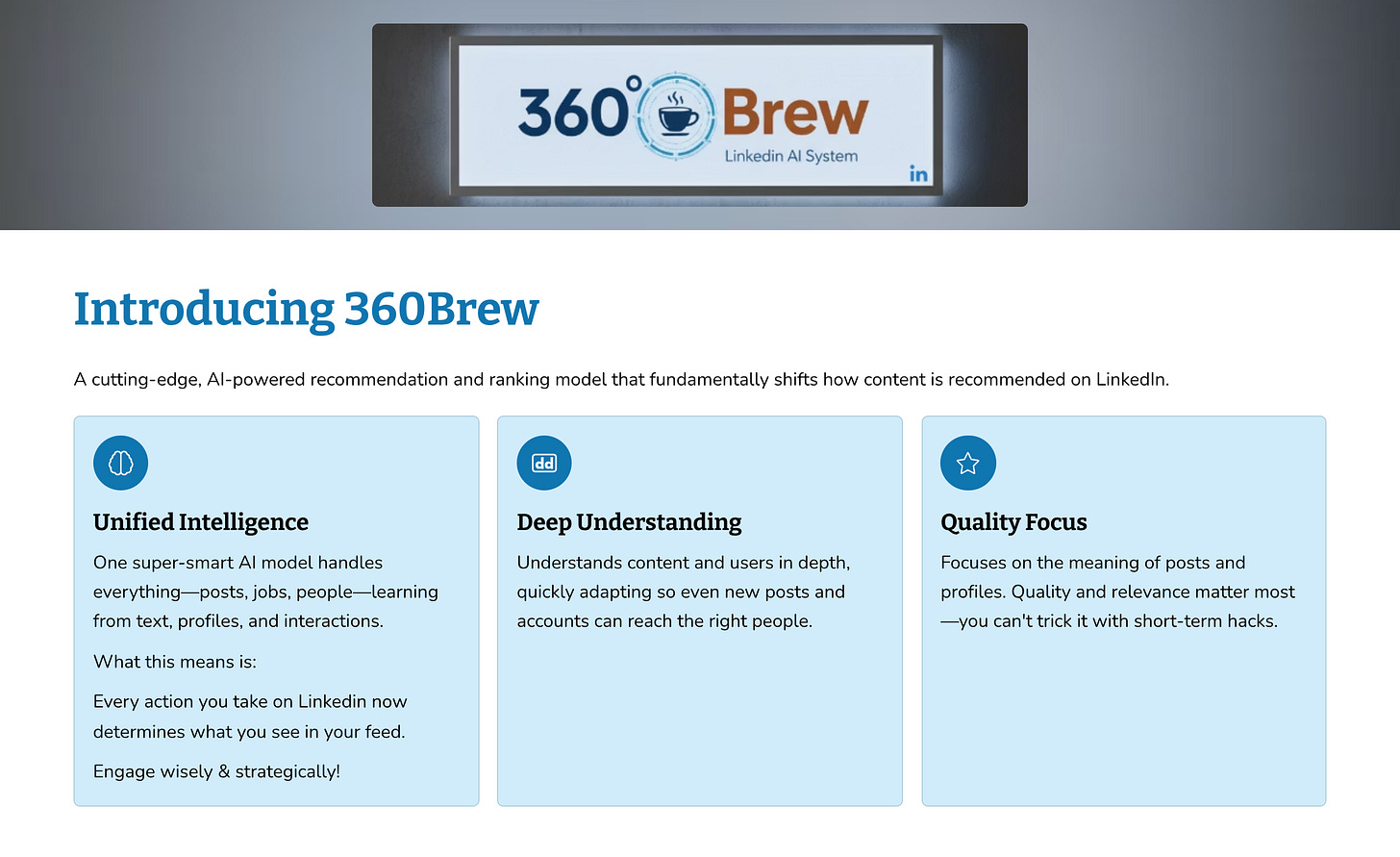
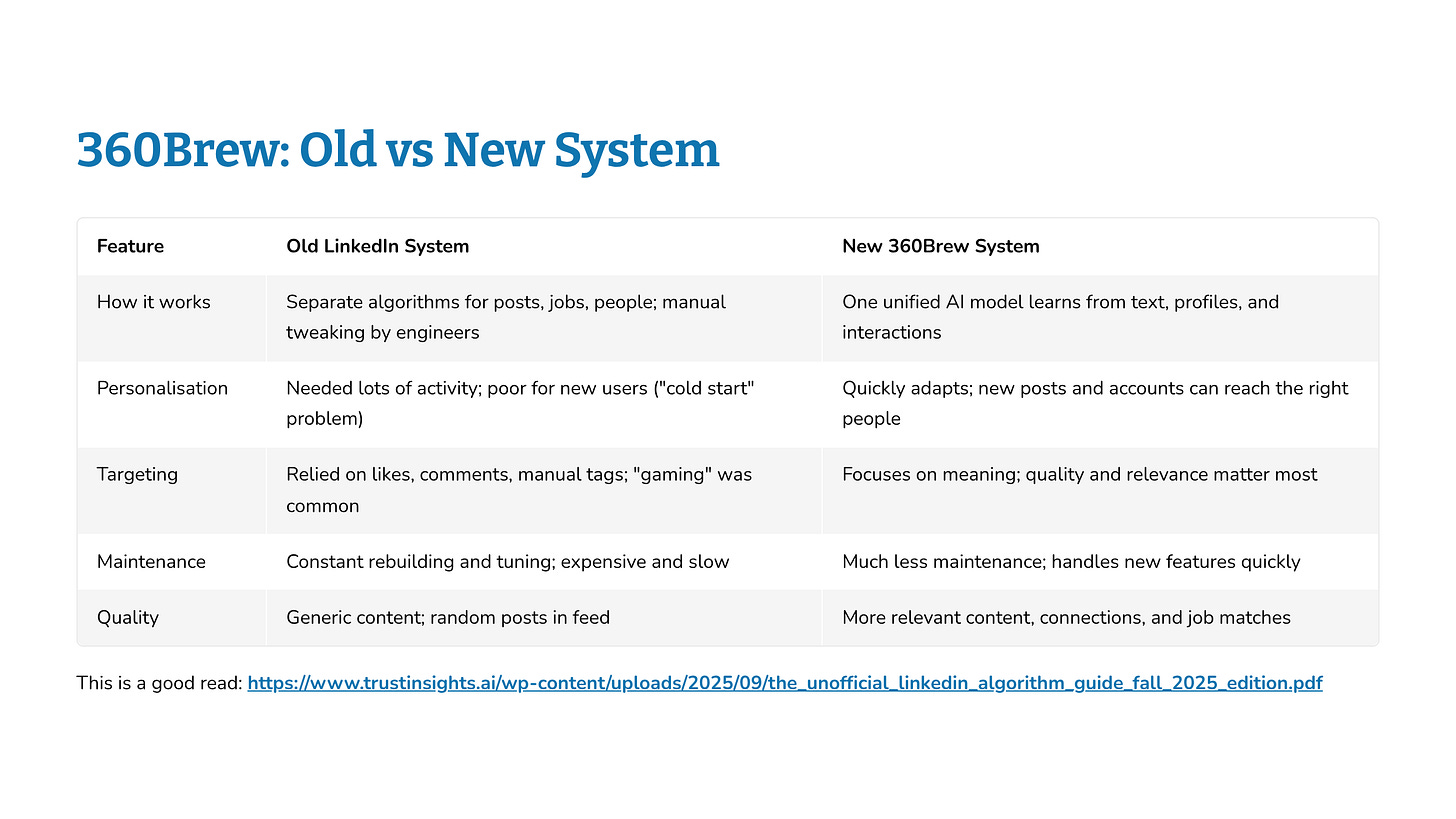
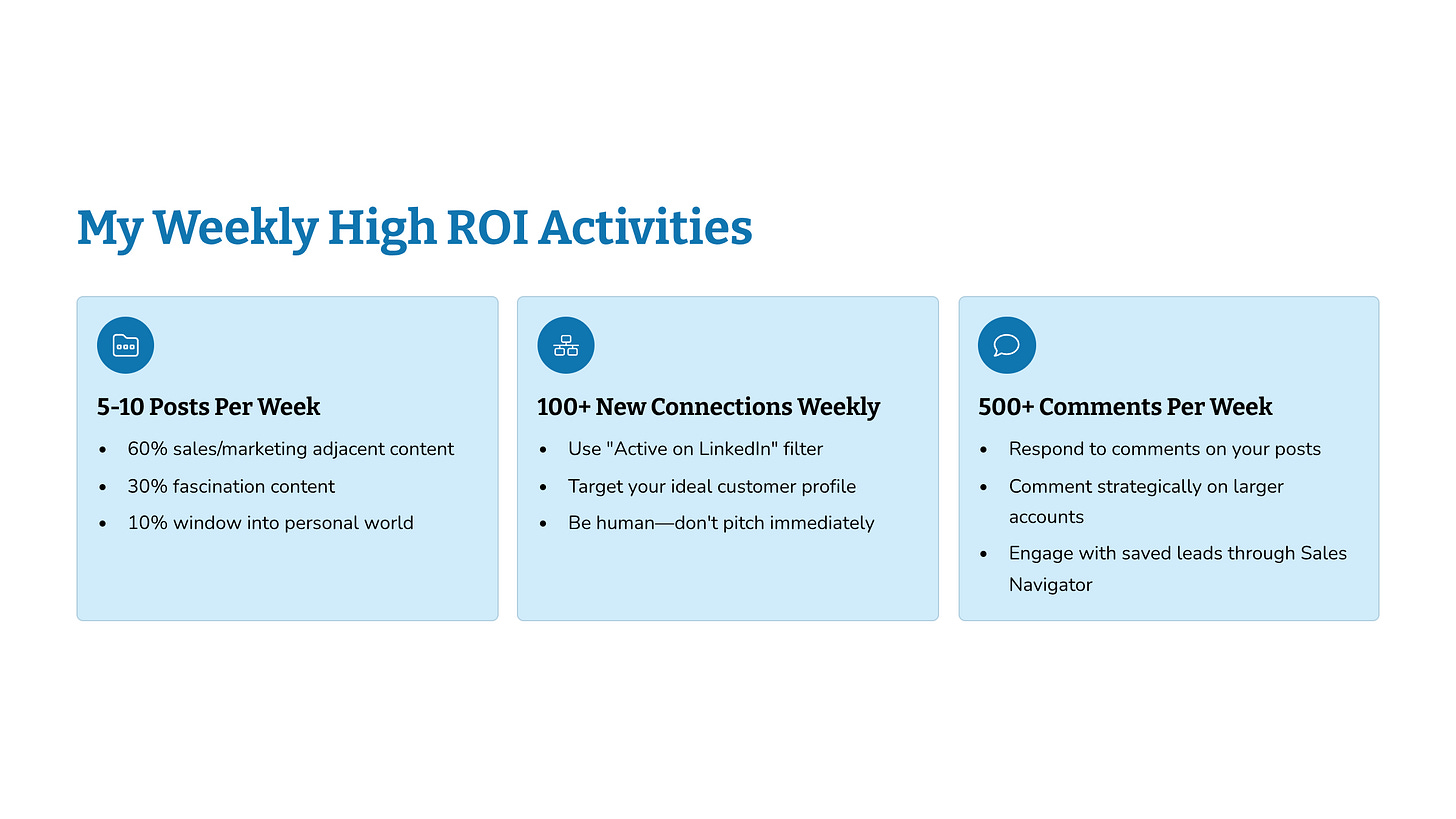
Hi5 Liam! This made me chuckle:
👉“I grew my following to 100k in 6 months while sleeping. You can too! Buy my course for $97 ($2,500 value)” 👈 too funny!
Thanks for always sharing your thoughts in a cohesive, easy to digest way. People can take it and run, or not, but they can't say, they don't understand.
Very informative, and I think you’re right about the changes.
LinkedIn definitely needed these!
I was getting tired of being contacted by those bots! 🤖